Theme 6 (NEI) - National and European Identity
10 min read•june 18, 2024
Bretnea Turner
AP European History 🇪🇺
335 resourcesSee Units
The one thing you need to know about this theme:
Nationalism can be both constructive and destructive to a nation state. While nationalism isn’t a term used often until the 19th century, the establishment and development of nation states influences every event in European history. The identity of each nation is based on their history, culture, geography, leaders, and so much more. And as such, the identity of Europe as a whole has been built on the commonalities and differences between each nation or has dissolved based on a nation’s inability to coexist with others. |
College Board Description📘
Definitions and perceptions of regional, cultural, national, and European identity have developed and been challenged over time, with varied and often profound effects on the political, social, and cultural order in Europe.
Organizing Questions🤔
How and why were national identities created, developed, and challenged?
How and why did cultural, regional, and other social identities coexist, challenge, or reinforce national identities and empires?
How and why did political, economic, and religious developments challenge or reinforce the idea of a unified Europe from 1450 to the present?
Key Vocabulary❗
| Alliance | Citizenship | Colonization |
| Empire | Enlightened Ideas | Historical Identity |
| Ideology | Independence | Monarchy |
| Nationalism | Political Marriage | Revolution |
| Sovereignty | State Building | Unify |
Historical Examples of this Theme:
c. 1450-1648
Christendom
The first unifying factor among all Europeans was the idea of a unified Christendom. Before nation states emerged or common cultures were propagandized, Europeans had a common foundation in Christianity, more specifically, Catholicism.
The Catholic Church⛪ served as a commonality among all people, a governing force for morality and behavior, a political entity to challenge monarchs, and the final say on any logic based question. While the Church didn’t give a choice in this unity, it did serve to give Europeans a common history and culture. It also served to pit them against those who were not of the Catholic faith like Jews, Muslims, natives, or even those who converted to protestantism after 1517.
Image Courtesy of Wikipedia
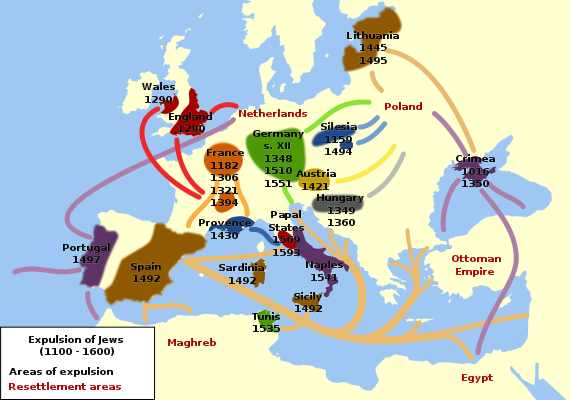
The Protestant Reformation is a significant challenge to the common identity of Europeans. While Catholicism certainly did not maintain peace within Europe, it was always a commonality that the majority of Europeans shared.
Lutheranism, Anglicanism, Calvinism, and other protestant faiths challenged the role of the Catholic Church in Europe and different states began to associate themselves with different faiths based on political issues. German states identified as Lutheran to gain more independence from the Holy Roman Empire. England identified as Anglican so King Henry VIII could obtain a divorce and remarry for an heir. Calvinism develops in Switzerland and becomes popular among Huguenots in France.
The first partition of Christianity in this time period was the Peace of Augsburg in 1555- allowing for German princes to choose Catholicism or Lutheranism for their people. That separation was made permanent by the Peace of Westphalia, essentially dissolving the most fundamental piece of European identity. While the Catholic Church worked to maintain their unity with the Council of Trent, regional identities had already emerged.
Image Courtesy of Wikimedia
Spain and Colonization
An example of state building during this time is the unity of Castile and Aragon by the political marriage of King Ferdinand and Queen Isabella👑 in 1469. They established the unified nation of Spain under similar histories, similar languages, and the enforcement of Catholicism as a means of rivaling Spain with other dominant powers in Europe. This unity will be enforced by the Spanish Inquisition and the nation will be bolstered by exploration and colonization.
Image Courtesy of TimeMaps
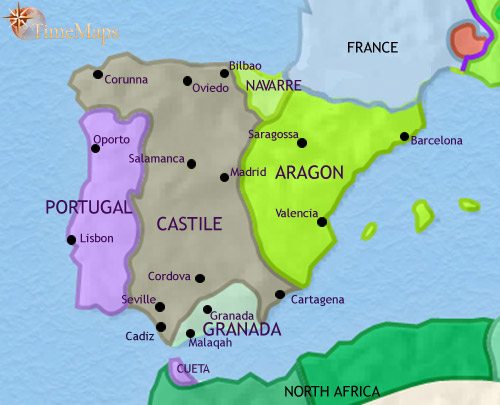
Colonization🗺 led Spain to control South America, Central America, and parts of North America. It led England to control much of North America. Portugal will control West Africa and parts of India. The French will conquer Canada and move into the Ohio River Valley area of North America. These colonization efforts positively affect European economies, but as a hidden agenda, they also create an inferiority complex among Europeans.
There is a certain element of prejudice that exists between Europeans and the natives they encounter. Europeans see no civilization, no common language, and violence, so they assume the land, resources, and people are for the taking. These actions separate Europe from its conquered world, creating the breeding ground for conflicts in the future.
c. 1648-1815
Enlightenment
Before the Enlightenment, people of a nation found unity in obedience to a common monarch. Ideas of rationality💭, the search for knowledge, the interest in citizenship, and the need for enlightened reforms formed a new unity among Europeans. Lower classes began to petition for rights, choices within religion and government, and for their voices to be heard by the government. Writers during this time took two paths: Enlightenment writers proposed reforms and revolutions if necessary. Romantics, while not necessarily opposed to reforms, focused on harmony within a nation.
Liberty Leading the People - Image Courtesy of Britannica
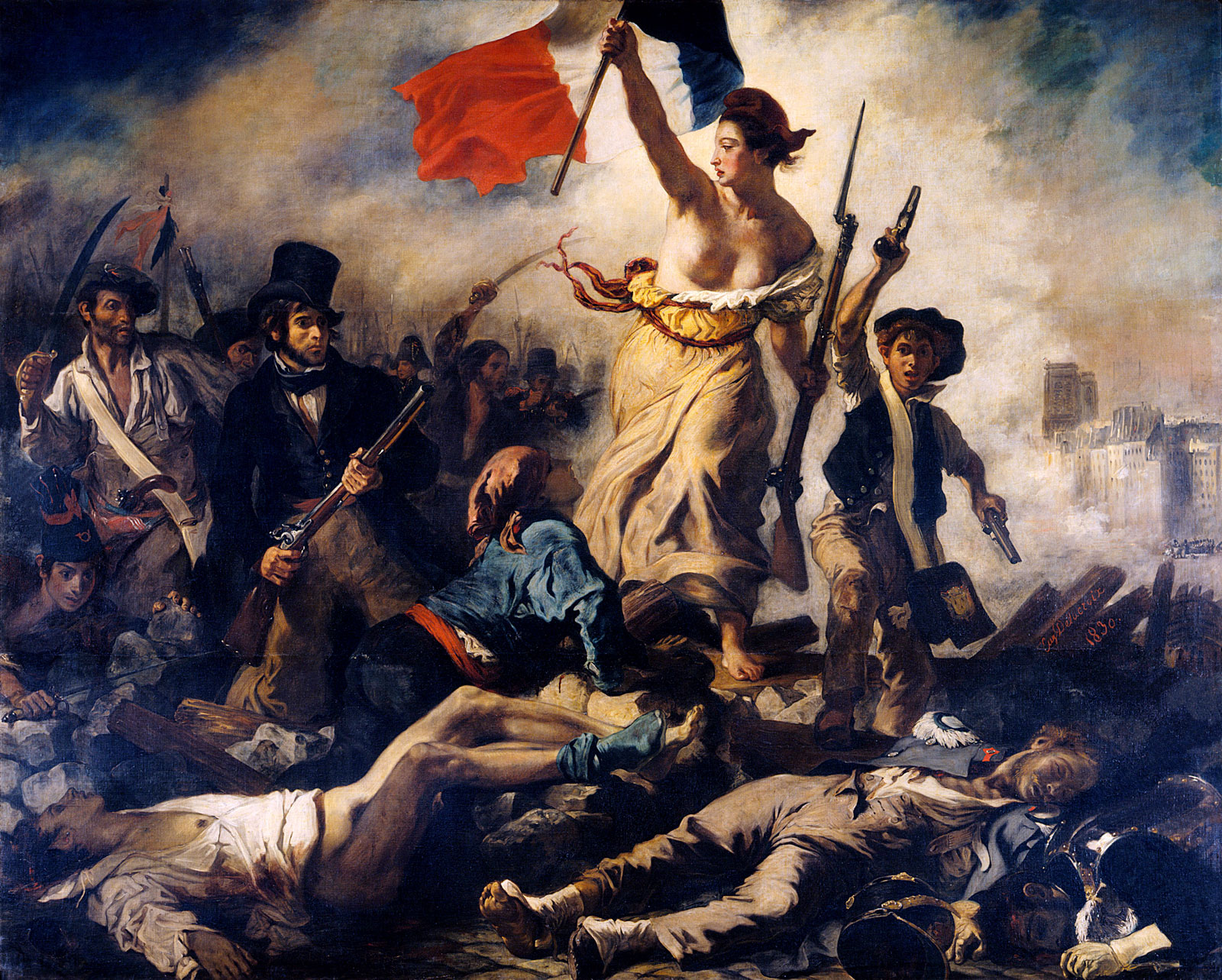
Rivalry: France and England
This will force many nations to vie for independence away from European countries, further highlighting the differences between European nations. Countries that had long histories of conflict, such as France and England, will deepen that history during the Seven Years War and the American Revolution💣. England will also establish a constitutional monarchy, a bill of rights, and revoke absolutism early during this time period. This establishes an identity within England that is consistent with their parliamentary history, but it didn’t mean everyone had rights yet.
In France, after the French Revolution💣 inspired by the Enlightenment, Napoleon will introduce a new identity for his people that doesn’t simply rely on a common history and language. He will bring over 300 French law codes together to form the Napoleonic Code📜, a systematic code of laws for all Frenchmen. He will also continue some revolutionary sentiment of diminishing the power of the Catholic Church to allow religious plurality, decreasing taxes and recognizing the needs of the former third estate, and making France a great European power through his Continental System.
Image Courtesy of Sutori
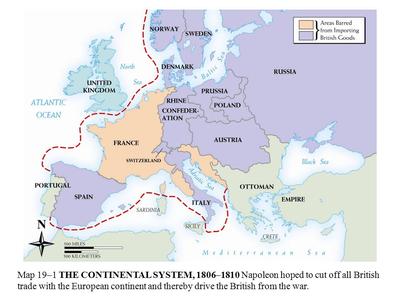
c. 1815-1914
Concert of Europe
The removal of Napoleon as a threat to European sovereignty established by the Peace of Westphalia introduced a new European identity- the Concert of Europe. At the Congress of Vienna in 1815, major European nations established a consistent identity together- one of conservative ideas in opposition to the French and American Revolutions caused by the Enlightenment. The Concert of Europe creates a balance of power in Europe, but specifically for each nation, it establishes authoritarian monarchies as the accepted form of governments to ensure similar identities.
Empires in Europe
While this may work for monarchs, it doesn’t work for people who have been heavily influenced by the Enlightenment. Many groups form to promote nationalism within their respective nations, seeking to end the stronghold of empires in Europe.
- French Empire: The French Empire is dismantled with the exile of Napoleon. Napoleon’s goal was to use France to control other nations of Europe to blockade Great Britain and become the most powerful European nation. However, that plan was thwarted with his invasion of Russia and eventual defeat by the British. This forced France to retreat and focus internally on trying to solidify a stable government.
- Austrian Empire: The Austrian Empire was all but dismantled by the Italian and German unification movements. Both movements used similar histories, languages, and cultures to unify sovereign states into separate nations while both taking land from Austria. The Austrian Empire long held lands that were German and Italian culturally, but those lands were taken through a series of wars to unify Italy and Germany, exhibiting new identities in these countries. This will force Austria to seek power in combining new nations in the late 19th and early 20th centuries to prolong their empire.
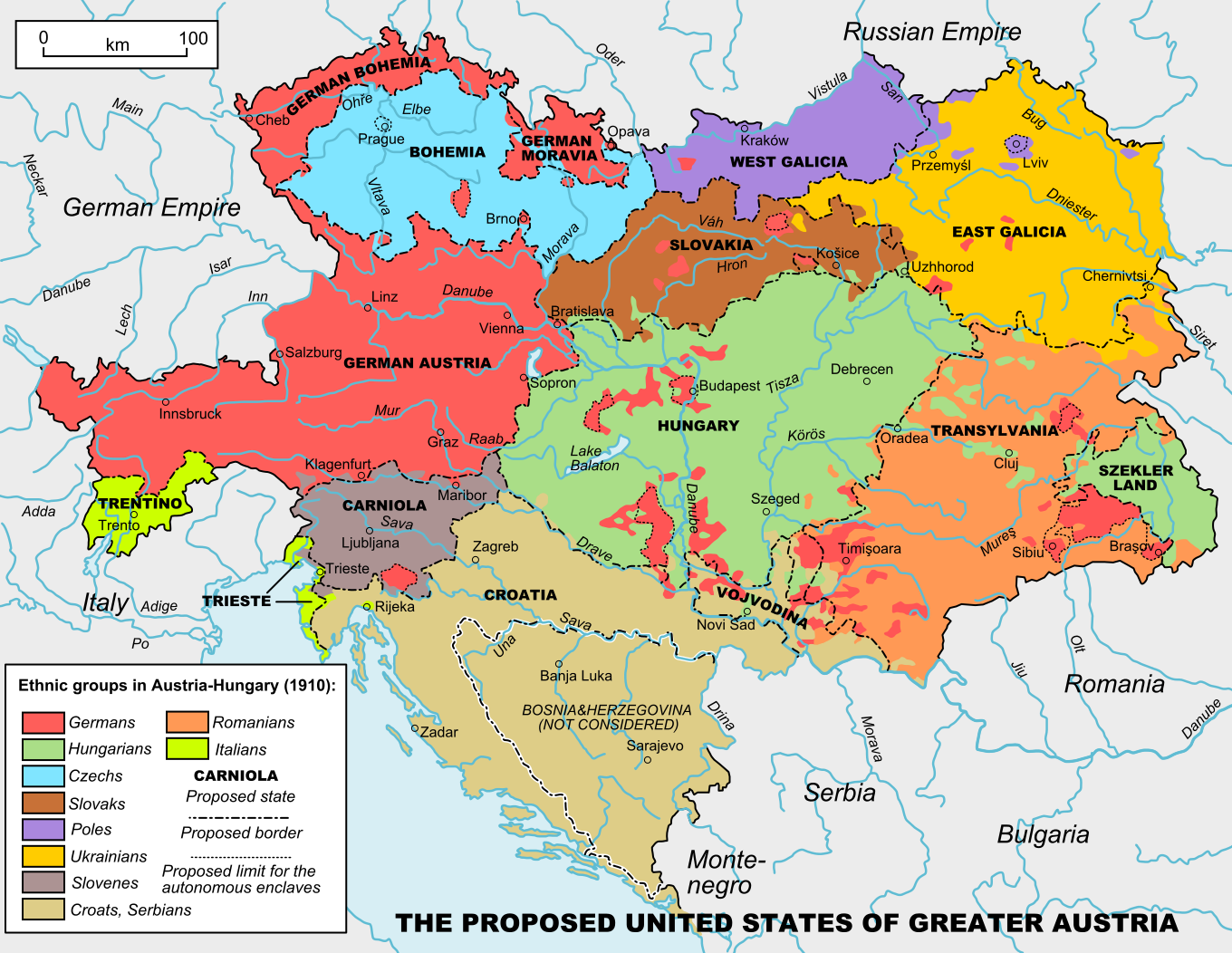
Image Courtesy of Brilliant Maps
Nationalism⭐
Nationalism can be both constructive and destructive. It will build nation states all over the world, including Europe. Examples of constructive nationalism are the unification of Italy and Germany, and the unity of France after their revolution. Examples of destructive nationalism are the end of the Austrian Empire mostly due to the unifications of Italy and Germany, and the destruction of the Ottoman Empire after the focus on sovereignty of nation states after the Paris Peace Conference 1919.
c. 1914- Present
Empires in Europe (continued)
Two other empires are impacted by surges in nationalism as well as the newfound focus on sovereignty of all nations, rather than just the strongest ones.
- Ottoman Empire: The Ottomans will be a punching bag through the middle of the 19th century. The Greeks obtained their independence in the 1820’s.
- In the Crimean War in 1852, the Russians attempted to take control over slavic peoples, who they claimed within their nationality, but the Ottomans were helped by the French and the British, and maintained their control.
- However, this is in the midst of a long decline for this empire, like the others. The Ottoman Empire will end with the Treaty of Versailles granting sovereignty to all nations, effectively dividing the former empire into more than 15 different states after 1919.

Image Courtesy of Musings
- British Empire- Unlike the other empires, the British were able to maintain control over their colonial territories long after this surgence in nationalism. The British fend off a mutiny in India in 1857 as well as defeating the Chinese in a series of wars ending in 1860 over the sale of opium there.
- The British are the exception to this surge in nationalism until the end of WWI. After WWI, many nations received sovereignty from the Treaty of Versailles, granting them independence. The British Empire will not officially end until Hong Kong gains its independence in 1997.
Image Courtesy of General History
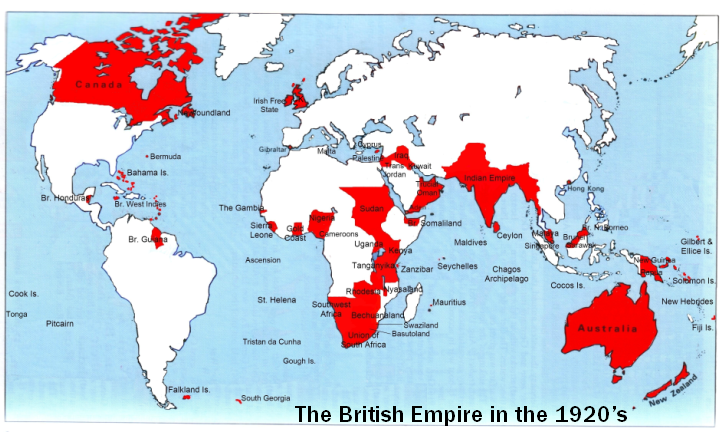
Russian Revolution💣
Vladimir Lenin and the Bolshevik Party opposed the leadership of Tsar Nicholas II, the last Romanov monarch of Russia. Many Russians were starving and had few resources because of the soldiers on the front lines of WWI. Most Russians believed Russia shouldn’t have even been involved in WWI and didn’t understand why their young men were dying in a war that seemed unjustified. The Russian people will unite under the ideas of communism in an effort to challenge their historical identity and overthrow their monarch. And they are successful through the Russian Revolution and the Russian Civil War.
Lenin and the Bolsheviks challenged the longstanding monarchy of Russia and instituted a completely new ideology- communism. The policies of Lenin are altered under his successor, Joseph Stalin, and enforced with a rigor that is responsible for the deaths of millions of Russians during the interwar period and WWII.
League of Nations
After WWI, the goal was to ensure there would never be another devastating world war. The Treaty of Versailles established the League of Nations to ally sovereign nations together, creating an identity of peace in Europe. Their objective was to act as a police force and contain conflict. However, without the monetary and military backing of the United States, one of the only stable countries immediately following WWI, the League of Nations was destined to fail.
United Nations
After WWII, the League of Nations was replaced by the United Nations. It is during this time that the Cold War is simmering and the United States and the Soviet Union have found identities in their ideologies of capitalism and communism. The Cold War had key hotspots in Korea, Vietnam, and Afghanistan. It was during this time that the agreed upon peace by Europeans was tested by conflicts in Asia, but remained steady. The newfound identity in peace superseded personal aspirations of each nation, bringing all nations together for a common goal.
European Union
Today, this identity in peace can be found in the European Union. While this peace established in 1993 wasn’t to diffuse conflicts between nations, it did create a common identity among all Europeans, which further fosters peace. With most nations having similar government structures, similar economies, speaking multiple shared languages, and sharing common histories as of the last century, Europe has taken on a continental identity. Currently, that identity is being challenged by Brexit, or the removal of Great Britain from the EU, and the economic issues of Greece, Ukraine, and other eastern European nations.
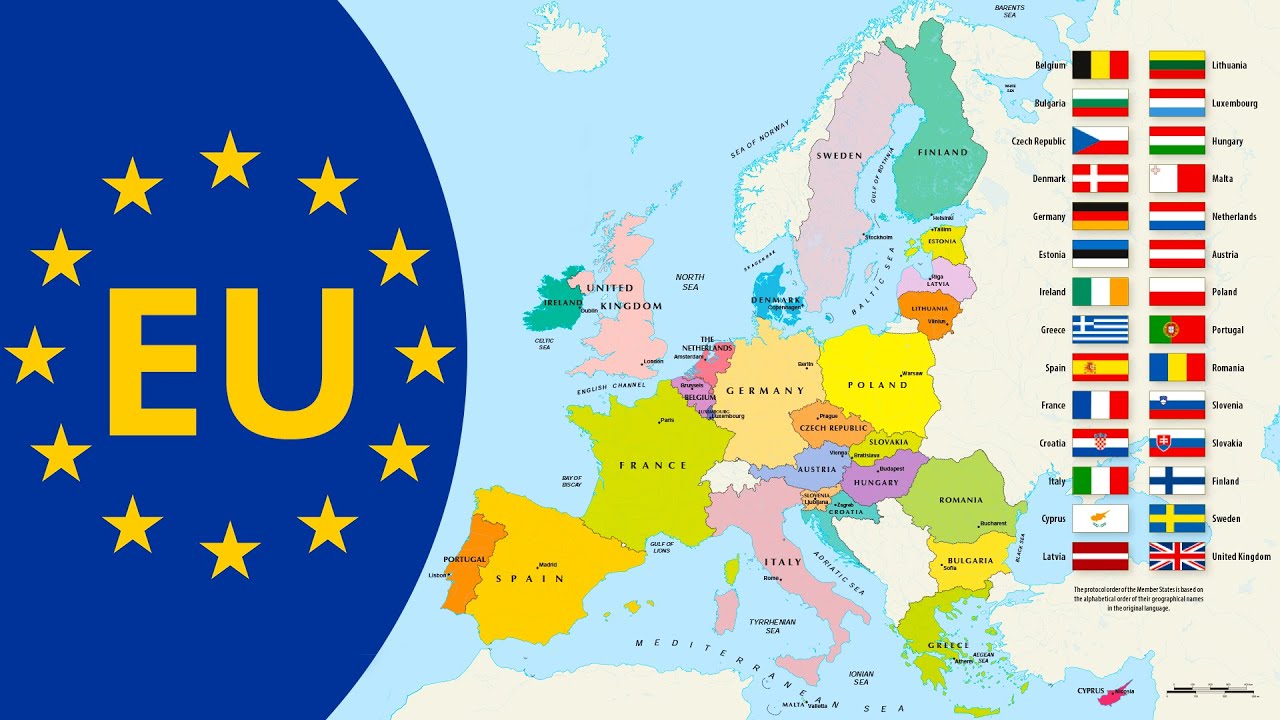
Image Courtesy of Kiddopedia
Sample Questions
Sample MCQ for this Theme
“The purpose of the geography curriculum was to come to know the narrower and broader Fatherland and to awaken one’s love of it. . . . From [merely learning the names of] the many rivers and mountains one will not see all the Serbian lands, not even the heroic and unfortunate field of Kosovo [on which the Ottomans defeated the Serbs in 1389]; from the many rivers and mountains children do not see that there are more Serbs living outside Serbia than in Serbia; they do not see that Serbia is surrounded on all sides by Serbian lands; from the many mountains and rivers we do not see that, were it not for the surrounding Serbs, Serbia would be a small island that foreign waves would quickly inundate and destroy; and, if there were no Serbia, the remainder of Serbdom would feel as though it did not have a heart.”
Report to the Serbian Teachers’ Association, 1911–1912 19.
The report best reflects which of the following goals of public education systems in the period before the First World War?
(A) Heightening awareness of the dangers of international conflict
(B) Greater appreciation of the Ottoman legacy in the Balkans
(C) Training bureaucrats for imperial posts
(D) Instilling feelings of nationalism
Sample SAQ for this Theme
Answer (a), (b), and (c).
- Describe one of Lenin’s critiques of the Russian monarchy.
- Describe one effect of Lenin’s critique on Russian politics.
- Explain how Stalin’s policies departed from Lenin’s policies.
Sample LEQ for this Theme
Analyze various ways in which government policies during the Revolutionary and Napoleonic era contributed to a greater sense of French national identity in the period 1789 to 1815.
Browse Study Guides By Unit
🎨Unit 1 – Renaissance & Exploration
⛪️Unit 2 – Reformation
👑Unit 3 – Absolutism & Constitutionalism
🤔Unit 4 – Scientific, Philosophical, & Political Developments
🥖Unit 5 – Conflict, Crisis, & Reaction in the Late 18th Century
🚂Unit 6 – Industrialization & Its Effects
✊Unit 7 – 19th Century Perspectives & Political Developments
💣Unit 8 – 20th Century Global Conflicts
🥶Unit 9 – Cold War & Contemporary Europe
📚Study Tools
🤔Exam Skills
👉Subject Guides

Fiveable
Resources
© 2025 Fiveable Inc. All rights reserved.